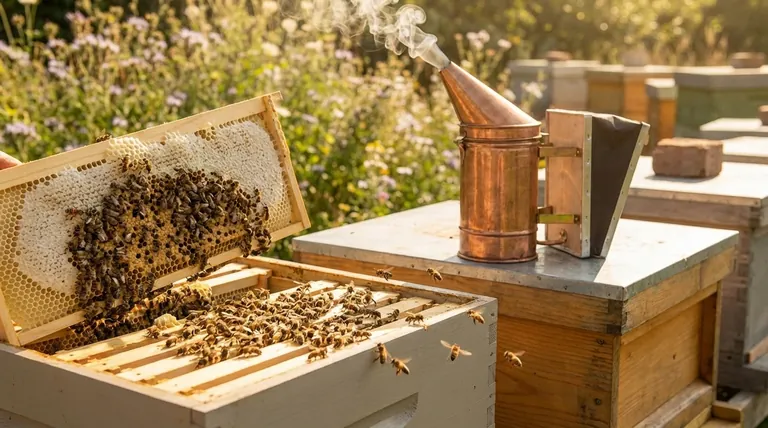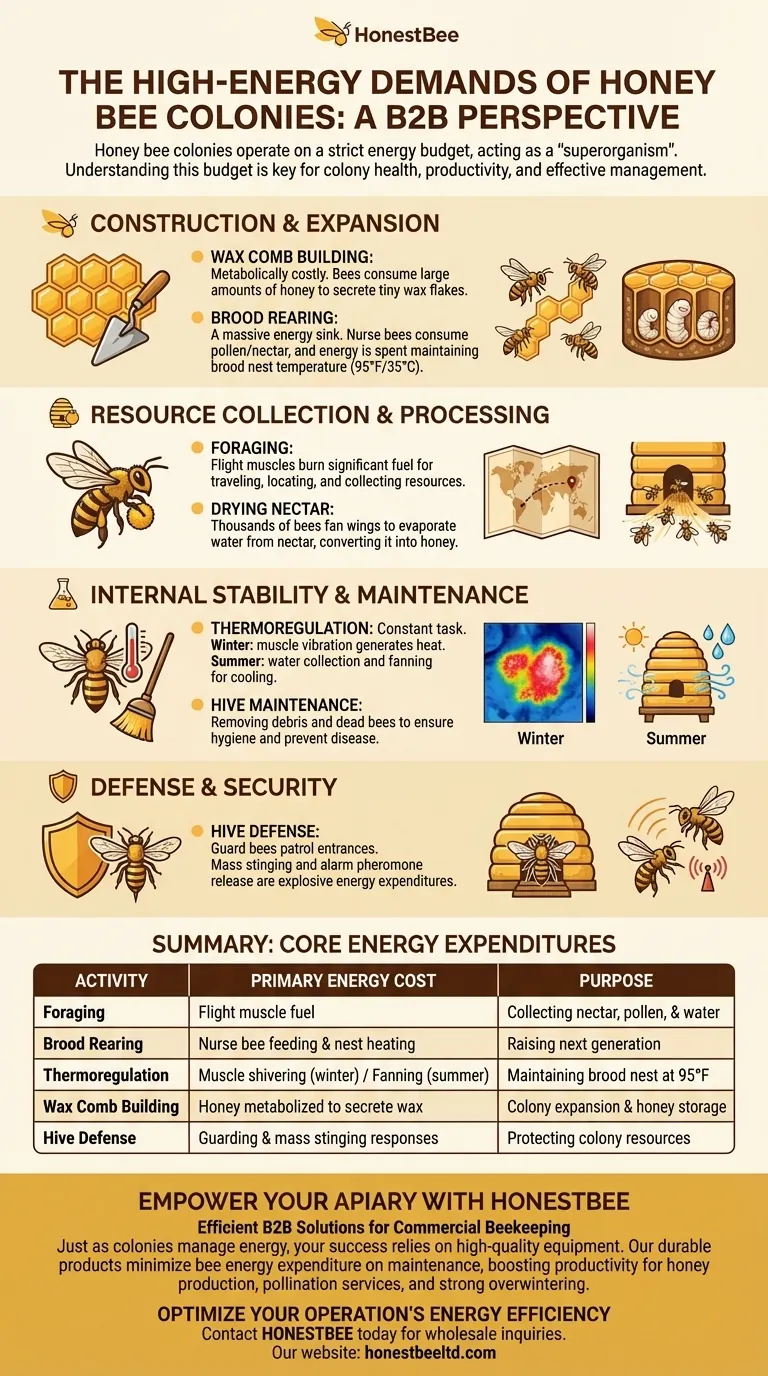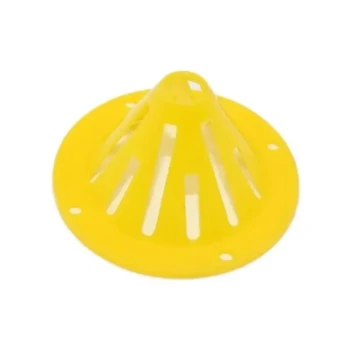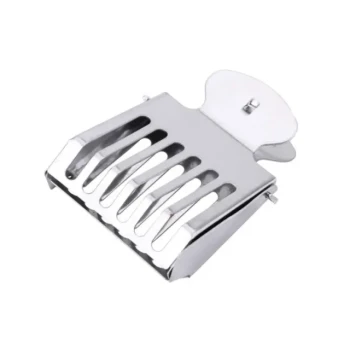Among the most energy-intensive activities for honey bees are those that maintain the colony's internal stability and ensure its future growth. This includes thermoregulation (heating the hive), building wax comb, foraging for resources, and raising the next generation of bees. These tasks represent the core metabolic cost of running the "superorganism" that is the honey bee colony.
A honey bee colony operates on a strict energy budget. Every calorie a bee expends on one activity, such as defending the hive or keeping brood warm, is a calorie that cannot be used for another, such as producing honey or building new comb. Understanding this budget is the key to understanding colony health and productivity.

The Colony's Core Energy Expenditures
A colony's energy is allocated across several critical domains. These tasks are not performed in isolation; they are deeply interconnected functions of a single, unified entity.
Construction and Expansion
The most visible sign of a colony's growth is its comb, and producing it is metabolically costly. Bees must consume large amounts of honey to secrete tiny flakes of wax.
Raising new bees, or brood rearing, is another massive energy sink. Nurse bees consume pollen and nectar to produce brood food, and the entire colony must expend energy to maintain the brood nest at a precise temperature (around 95°F/35°C).
Resource Collection and Processing
Foraging is the most obvious expenditure. A bee's flight muscles burn significant fuel as it travels, potentially miles, to locate and collect nectar, pollen, and water.
Once nectar is brought to the hive, it must be converted into honey. This process involves drying the nectar by fanning wings to evaporate its water content, a coordinated effort that consumes substantial energy from thousands of bees.
Internal Stability and Maintenance
Thermoregulation is a constant, critical task. In winter, bees form a cluster and vibrate their flight muscles to generate heat, burning through their honey stores to survive the cold. In summer, they collect water and fan it to evaporatively cool the hive.
General hive maintenance and cleaning also require energy. Removing debris and dead bees is essential for hygiene and preventing the spread of disease, protecting the colony's overall health.
Defense and Security
Protecting the colony's resources and population is non-negotiable. Guard bees expend energy patrolling the entrance, and a defensive response—involving mass stinging and the release of alarm pheromones—is an explosive, all-out energy expenditure for the bees involved.
Understanding the Energy Trade-offs
A colony's decisions are always governed by a balance of needs. Recognizing these trade-offs is essential for any observer or manager of honey bees.
Survival vs. Production
Energy spent on survival is energy not spent on producing a surplus. A colony in a cold, poorly insulated hive will burn through its honey stores just to stay warm, leaving little to no surplus for a beekeeper to harvest. Similarly, a hive constantly fending off pests like wasps or hornets diverts foraging bees to defensive roles.
A Weak Brood Cycle's Impact
If a queen is failing or the colony is short on pollen, the brood cycle weakens. This not only limits future population growth but also creates a demographic imbalance, reducing the number of young bees available to build comb, tend to the queen, and eventually become foragers.
The Cost of Environmental Stress
A prolonged nectar dearth, unseasonably cold weather, or exposure to pesticides forces the colony into a conservative state. It will reduce brood rearing and foraging to conserve its existing stores, prioritizing the survival of the current population over expansion.
Managing Your Colony's Energy Budget
By understanding where a colony's energy goes, a beekeeper can make strategic decisions to support its health and achieve specific goals.
- If your primary focus is honey production: Ensure the hive is well-insulated and ventilated to minimize energy spent on thermoregulation, and manage pests aggressively to reduce defensive costs.
- If your primary focus is colony survival (e.g., overwintering): Leave ample honey stores to fuel the winter cluster and protect the hive from harsh winds to reduce the metabolic load.
- If your primary focus is population growth: Supplement with sugar syrup and pollen patties during a nectar dearth to provide the fuel needed for comb building and brood rearing.
Effectively managing a honey bee colony is to act as the steward of its collective energy.
Summary Table:
| Activity | Primary Energy Cost | Purpose |
|---|---|---|
| Foraging | Flight muscle fuel | Collecting nectar, pollen, and water |
| Brood Rearing | Nurse bee feeding & nest heating | Raising the next generation of bees |
| Thermoregulation | Muscle shivering (winter) / fanning (summer) | Maintaining brood nest at 95°F (35°C) |
| Wax Comb Building | Honey metabolized to secrete wax | Colony expansion and honey storage |
| Hive Defense | Guarding and mass stinging responses | Protecting colony resources and population |
Empower Your Apiary with HONESTBEE
Just as a honey bee colony must manage its energy budget wisely, successful commercial beekeeping relies on efficient, high-quality equipment. By reducing the energy your bees expend on thermoregulation and hive maintenance, you can directly boost their productivity in honey production and pollination services.
HONESTBEE supplies durable, well-designed beekeeping supplies and equipment to commercial apiaries and distributors through wholesale-focused operations. Our products are engineered to support colony health and minimize stress, helping you achieve your goals—whether that's maximizing honey yields, ensuring strong overwintering survival, or promoting robust population growth.
Let's discuss how our solutions can optimize your operation's energy efficiency. Contact HONESTBEE today for wholesale inquiries.
Visual Guide

Related Products
- Premium Traditional Copper Bee Smoker with Bellows
- Wooden Queen Bee Excluder for Beekeeping
- Slatted Porter Style Bee Escape for Rapid Hive Clearing
- Wholesales Dadant Size Wooden Bee Hives for Beekeeping
- Automatic Honey Flow Beehive 4 Frame Mini Hive for Beekeeping
People Also Ask
- What are the main components of a bee smoker? A Guide to Safe and Effective Hive Management
- How did early beekeepers use bee smokers? Master Ancient Bee Calming Techniques
- What is the purpose of a bee smoker and how should it be used? A Guide to Calm, Safe Hive Inspections
- What are some alternatives to using smoke in beekeeping? A Guide to Gentle Hive Management
- How does water mist work as an alternative to smoke in beehives? A Guide to Safe & Effective Use



















